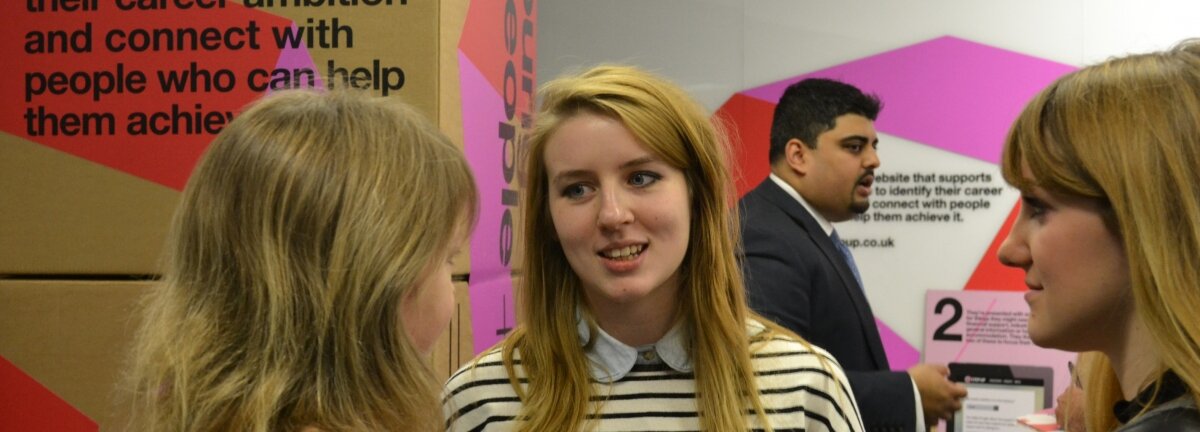Social enterprise is good for design

Very few of the teams that take part in our challenges come away with their design practice unchanged – mostly it is more urgent, with a deeper skill and passion for understanding what people really need
On the 30th January we launched 3 services created as part of the Working Well Design Challenge, a partnership with Nominet Trust. It was an uplifting day, full of young people taking command of their futures, helping others to do the same and frankly being a bit cheeky towards the over 35s in the audience.
As part of the evening event, Mike Smart, who led the challenge for the Design Council, asked me to reflect for the audience on what we’ve learned about design and social enterprise over the past 5 years. We’ve helped to create and launch more than 30 products and services to market over that time, focused on improving lives, often by incubating start-ups. So this list is not just about designing for social impact but designing for social start-ups.
1. Need, want, impact
It doesn’t matter whether you sit at the helm of a supertanker-sized global corporation, or bob about in a dinghy-sized charity, everyone can become obsessed with what they do rather than what their customers would like them to do. Design, through nicking many of the best bits of ethnographic practice, helps us to understand and deliver what people need and want, its creativity imagining new possibilities. Design, therefore, has much to bring the world of social enterprise.
What social enterprise gives back in return is the concept of impact – not letting designers get away with defining success as ‘shipping a lot of units’ but truly trying to understand if they have improved life, made no impact, or made it worse.
2. Stop talking, start making
Designers think through making things, they then decide through showing them to users. This generally beats talking about stuff. Design is a very efficient form of action-research that helps deliver on the first item on my list.
What interests me is that the start-up scene, whether social impact oriented or not, is tight on resources. Compared with the first dotcom boom in the late nineties, the amount of capital that most start-ups work with is far less. There are many reasons for this, but my point is that this is good news for social start-ups because all of the techniques – indeed all of the theory of the lean start-up – is perfect for cash-strapped social enterprises. The lean startup has become a universally applicable model.
3. The geek, the barrow-boy and the luvvie
And this lean start-up has design as one of the core disciplines. The creative, human-centred perspective helps define what the business is fundamentally about, design is not just applied at the end.
The colloquial expression for this, apparently, is that to the geek (developer) and barrow-boy (business modelling and marketing) we now add the luvvie (yes, the designer). We now see this trio of expertise in many of the most celebrated internet start-ups (Pinterest, Flickr, Etsy, Square, Tumblr, YouTube, Kickstarter). And yet again the model works for social enterprise too.
4. Delight is vital
I was taught that design should be useful, usable and delightful. ‘Delightful’ always seemed the hardest to be definitive about (why not ‘fun’, ‘attractive’ ‘beautiful’?) but whatever the case we know that commercially-oriented design, at its best, nails delight. Angry Birds, the Citroen DS (new or old), a really well made pair of British brogues – these are just a few of my favourite things.
But when designers get involved in social impact they can sometimes lose their nerve. They become worthy in the bad sense of the word: ‘this is a serious topic, I just don’t want to be perceived as flippant’. Well meaning but wrong. So many of the best designs we have helped create delight to where there has been too little, such as social care. Never EVER forget to delight.
5. Commitment
We all know that joining a start-up is different from having a steady job. It’s a high-pressure sprint to make progress as quickly as possible. And for many it is about receiving less money now in order to reap more in the future. The thing about social enterprises is that money is even tighter. You are not likely to strike it rich.
So pity the poor designer in a consultancy who thinks they want to form a social impact start-up. You go from earning fees every hour for… not doing so. It’s definitely been an area where experienced designers can struggle – forming a business almost certainly will conflict with running a consultancy.
So what?
In making this list it was affirming to see that design for social enterprise is remarkably similar to design for anything else – and so it should be if we believe in having social purpose in any decent enterprise. Designers have to hold their nerve and believe that delight is as important as utility whatever they are designing.
But clearly there is knowledge and skills, most notably in understanding how to create and measure social impact, that typical design training for the commercial sector will miss.
What fascinated me most about this act of reflection was to see that while we still believe design is of great benefit to the world of social enterprises, it is also true to say that the world of social enterprise is good for design.
Only very few of the teams that take part in our challenges come away with their design practice unchanged. Mostly it is more urgent, with a deeper skill and passion for understanding what people really need and giving that to them as elegantly as possible.
Social enterprise is good for design.
Subscribe to our newsletter
Want to keep up with the latest from the Design Council?
